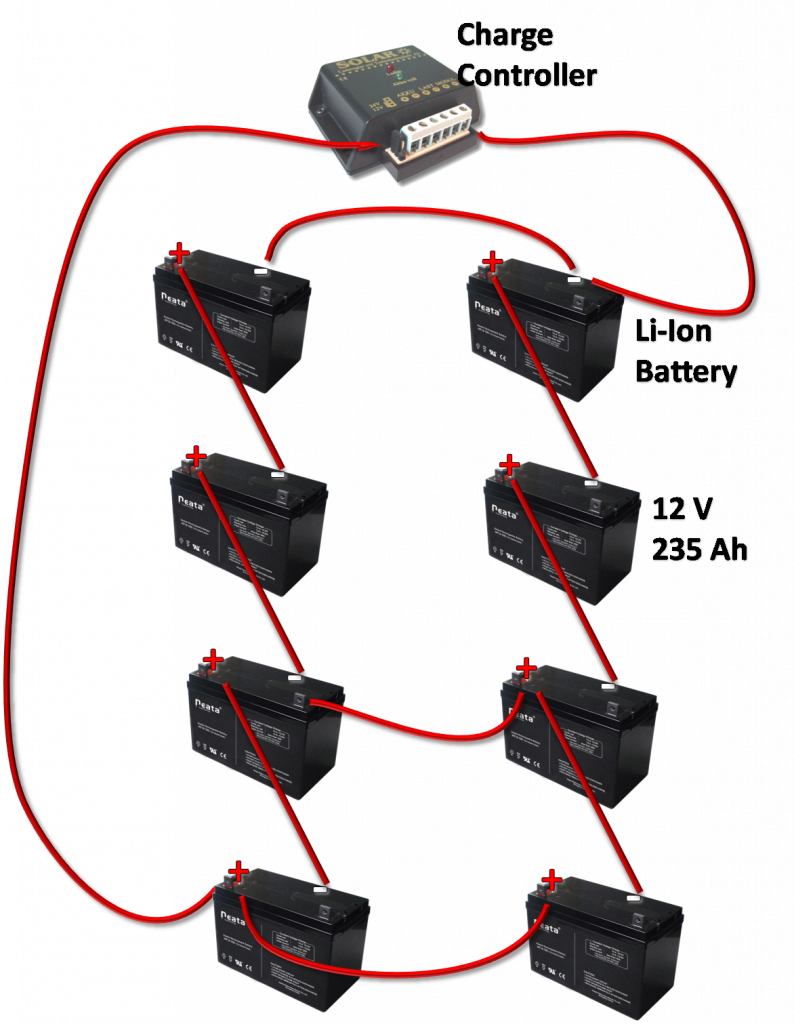BATTERY BANK DESIGN
As with other components of the photovoltaic installation, the battery selection process proceeds by trial and error. For example, consider that a load of 3 kilowatt-hour has to be supplied through a battery bank using 235 Ah 12V batteries rated a C/20 and 80 degrees Fahrenheit wired at 48 volts. The battery compartment may get as low as 40 degrees Fahrenheit in the cold period that extends from November to February but the manufacturer advises that upon these conditions 10 percent of the nominal capacity may be compromised. The depth of discharge is allowed to go up to 50 percent during the same period for which three days of autonomy have to be assured. The manufacturer guarantees the batteries for 400+ cycles at 50% depth of discharge but a life guarantee is also extended for a period of 8 years. It is necessary to determine the minimum number of batteries and a proposition for a proper layout for the system.
Since battery capacity is given in Ah, the load in kilowatt-hour to be supplied must be converted to Ah.
3 kilowatt-hr = (3,000 watt-hr/48 volts) = 62.5 Ah
This capacity must be increased as there is the possibility that the batteries will be discharged up to 50% DOD. Furthermore, the efficiency in the cold season will be 90% as 10% may be lost because of the temperature effect.
(62.5/(0.50×0.90) = (62.5/0.45) = 139 Ah
The battery system must supply the critical load for 3 days. Therefore
139 x 3 = 417 Ah
1 battery supplies 235 Ah at 12V
4 batteries connected in series supply 235 Ah at 48V
2 series strings in parallel supply 470 Ah at 48 V
The adoption of 470 Ah capacity may look conservative when compared to 417 ( (470/417) = 1.13). However, no losses have been accounted for wiring, neither the efficiency of the converter or inverter placed in between has been considered yet. So, it seems that 8 235 Ah batteries will provide a good solution in this case. Therefore, the 3 Kilowatt-hr load required for three days will be safely satisfied with the battery storage system hereby specified.
This design has considered a scenario of one discharge-charge cycle to 50% DOD every three days during the period November to February. It is assumed that the battery system will not be stressed up to 50% DOD or beyond during the rest of a given year. Therefore, under this assumption the number of 50% DOD cycles for 120 days is also the number of 50% DOD cycles for one year.
(120/3) = 40 cycles/year.
The manufactured specified the battery for 400 cycles at 50% depth of discharge.
((400 cycles/year)/40years) = 10) = 10 years
This is a possibility; however the warranty in this example problem was extended only for a period of 8 years.

Pingback: Introduction « BATTERIES FOR PHOTOVOLTAIC SYSTEMS